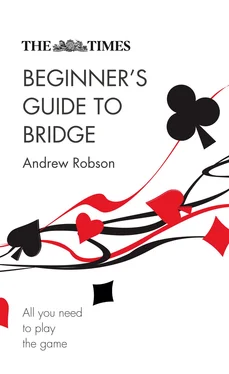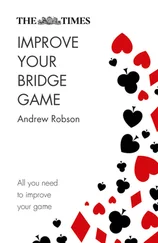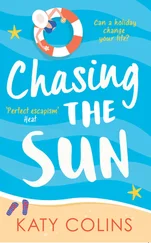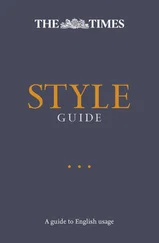After the bidding has opened
Once the bidding has opened, 12 points are no longer needed to bid. You can enter the bidding if you have a good, long suit. There are two options: to make a higher bid – going up the series of steps shown in the diagram on p. 22– or to pass. Note that your bid must be higher than the previous one. This is where the ranking order of suits is crucial: you can bid a higher-ranked suit or ‘no-trumps’ (a deal played without a trump suit – see p. 27) at the same level (e.g. at the One level), but to bid a lower-ranked suit you must ‘raise the level’ i.e. ‘contract for’ (promise to win) one more trick than the previous bidder.
The bidding continues until three players in a row pass, which signifies the end of the auction.
The bidding steps: the number next to the suit refers to the number of tricks plus six that you are contracting to make in the chosen trump suit, or in no-trumps (NT)
A typical bidding sequence
North deals and passes as he lacks 12+ points needed to open the bidding. East (next in clockwise rotation) opens the bidding with 1♥ – he has 12+ points and his longest (or equal longest) suit is hearts. South then bids 2♣ – he doesn’t need 12 points as the bidding has opened, but must raise the level to ‘Two’ (i.e. an eight-trick target) because clubs are ranked lower than hearts. West supports his partner’s chosen suit, hearts, by bidding 2♥, North then bids 3♣, upping his partnership’s target to nine winning tricks out of thirteen. North’s 3♣ bid ends the auction, because it is followed by three passes in a row, and 3♣ becomes the final contract. South becomes declarer and must make nine (or more) tricks with clubs as trumps; the defenders E-W need to win five tricks in order to stop him.
must know
Bidding essentials:
• Open the bidding with 12+ points.
• Once the bidding has opened, 12+ points are no longer needed to make a bid.
• You have two choices: to make a higher bid, or to pass (as in any other auction).
• The player within the highest-bidding partnership who was first to name the trump suit (or no-trumps) becomes the declarer. His partner becomes dummy.
• The defender on the left of the declarer leads the first card.
After the bidding has ended
Each of the four players has the opportunity to bid on the first round. When the bidding ends (three passes in a row), the highest bid becomes the final contract, and the player who first bid the suit (within the highest-bidding partnership) becomes the declarer. The player on the declarer’s left leads the first card (choosing any card to lead). The declarer’s partner then puts down his hand face up, sorted into suits (his hand is ‘tabled’), and, as the ‘dummy’, takes no further part in playing out the deal, the declarer playing cards from his own hand and from the dummy hand. Thus, everyone playing the deal is able to see half the deck: 13 cards in their own hand and the 13 cards laid out on the table by dummy. The advantage for the declarer is that he is the only player at the table who can see his own partner’s cards, and gets to play them.
In this example, South becomes declarer (by virtue of bidding the trump suit, clubs, first). West, on his left, leads, whereupon dummy (North) tables his cards face up, placing trumps (clubs) on his right, and the other suits (preferably with colours split) to his left, with the highest card in each suit nearest dummy, the lowest nearest the middle of the table.
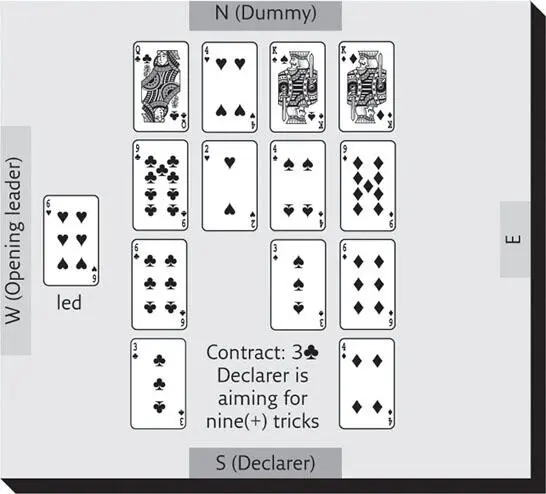
Dummy is tabled
must know
Bridge is a co-operative game: try to inform your partner about your hand, remembering that quantity is more important than quality when it comes to suggesting a trump suit. Bridge is also a competitive game: your opponents are trying to make your life awkward. Do not be fooled or bullied by them.
Either the declarer fulfils his target (perhaps even making extra tricks), or he doesn’t (because he fails to achieve the contracted number of tricks, by one or more). All eventualities are taken into consideration in the scoring (see pp. 220–7).
want to know more?
• The type of bridge described in this book is ‘Rubber Bridge’, a version of Contract Bridge whose overall objective is to win a ‘rubber’, i.e. the best of three games. For more on scoring games and rubbers, see pp. 220–7.
• Other types of bridge, including Chicago, Duplicate and Minibridge, are outlined on pp. 228–31.
• Other methods of evaluating a bridge hand (besides counting points) are covered on pp. 190–5.
By now you’ve had your first taste of bridge and you’re ready to move on. You’re learning that distribution, or ‘shape’, is the key to bridge. In this chapter you’ll learn more about assessing a bridge hand, finding a trump fit and bidding to a game contract. There’s also guidance on trick-taking and defence.
In bidding, your objective is to indicate to your partner what sort of hand you have, and determine how many tricks to aim for. To open the bidding we’ve learnt that you need 12 or more points. If you are able to open, you must also see if your hand is balanced or unbalanced: your whole bidding strategy depends on the answer.
Balanced or unbalanced hand?
The 13 cards of each suit are divided between between the four players. Each hand has a distribution, for example, a hand consisting of three spades, three hearts, four diamonds and three clubs has a distribution of 4333.
A balanced hand contains:
• no void (suit with no cards)
• no ‘singleton’ (suit with just one card)
• not more than one ‘doubleton’ (suit with just two cards)
must know
All distributions (or ‘shapes’) can be subdivided into one of two categories: balanced or unbalanced.
The distributions, or shapes, that satisfy all three criteria are 4432, 4333 and 5332. These are the three balanced shapes:
Opening with a balanced hand
With a balanced hand – no void, no singleton and not more than one doubleton – your bidding plan should revolve around no-trumps (see the following panel). The even spread of a balanced hand means you have no strong preference for a trump suit, which is why bidding no-trumps makes sense. However, an opening bid of One no-trump (1NT) shows a specific point count, so you may need to delay your no-trump bid if your point count is higher in order to convey the right message to your partner.
No-trumps
As the name suggests, ‘no-trumps’ means that the deal is played without a trump suit so in each round played the highest card of the lead suit always wins the trick. Arguably it’s slightly more difficult for the declaring side not to have the security of a trump suit, but no-trumps outranks all the trump suits (see the bidding ladder on p. 22and notice that no-trumps is higher ranked than spades, the highest ranked suit). No-trumps also scores slightly better (see p. 221), so plays a huge role. Typically, a no-trump bid is made when you have no long suit and no short suit – an even spread, or balanced hand. The most important no-trump bid is the opening bid of One no-trump (1NT) because this describes your hand very accurately to your partner. If you open the bidding with 1NT, in most cases you shouldn’t bid again. Having described your hand so accurately, you should leave further bidding decisions to your partner (see p. 35for your partner’s response to a 1NT opener).
Читать дальше
